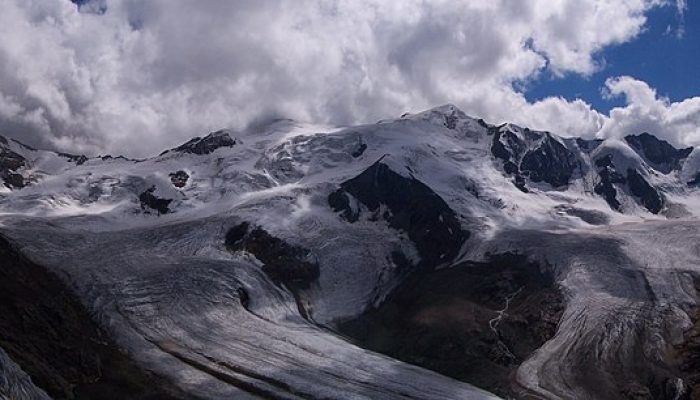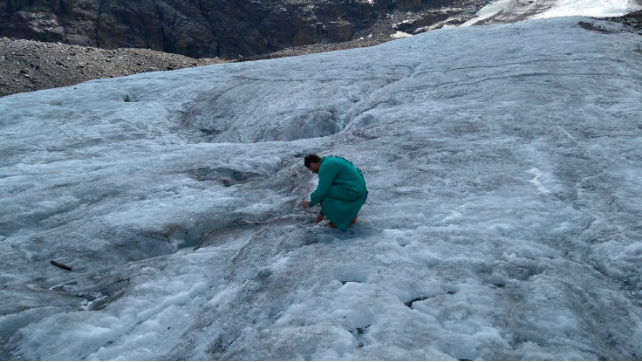
We tend to think of glaciers as spotless pristine settings. But “if plastic is everywhere, why not on the surface of glaciers?” This occurred to Roberto Sergio Azzoni, a professor of environmental science and policy at the University of Milan in Italy, who decided to find the answer to this question for himself. At the European Geosciences Union General Assembly in Vienna, Azzoni and his team presented the first evidence ever of microplastic contamination on alpine glaciers.
The study was conducted on Forni Glacier, one of the largest valley glaciers in the Italian Alps. The beautiful ice sculpted valley, home to World War I historical sites and a popular hiking route, attracts hundreds of trekkers and alpinists every year. Assuming on-site human activity could be a source of pollution, the team decided to collect the first sediment samples there.
It turns out they were right: the results showed that the samples contained on average about 75 particles of microplastic per kilogram of sediment. This level of contamination is comparable to what is observed in marine and coastal areas in Europe. Extrapolation of this data suggests that there may be between 131 and 162 million plastic particles present on the surface of Forni Glacier, fibers and fragments combined.
The precise origin of the particles is hard to define. Likely, some of the pollution had been carried by air masses from densely urbanized areas surrounding the Alps. However, researchers think most of the plastic has a local origin, since the most common polymer found in the samples was polyester, a component used in technical clothing and equipment for hikers.
For that very reason, in order to avoid contaminating the supraglacial sediment samples during the field campaign, research participants wore only 100% cotton clothes and wooden clogs, a challenging outfit for hiking a glacier.

In order to avoid contaminating the supraglacial sediment samples researchers had to wear 100% cotton clothes and wooden clogs. (Credit: Roberto Sergio Azzoni)
Now, the team plans a follow-up study that will classify the plastic particles more precisely and help determine the origin of the pollutants.
This current study also opens the door to new research on how microplastic contaminants on the surface of alpine glaciers disperse when the ice melts. Although Forni Glacier does not feed drinking water sources down valley, in other locations fibers and fragments could enter the trophic chain and impact ecosystems.
Azzoni notes that hopefully this preliminary study will increase public interest on the topic and raise awareness of the fragility of glaciers. Human activity is producing long-lasting changes to the Earth’s surface that will affect many generations to come, now we can confirm that mountain glaciers are not an exception.
By Maria Rubal Thomsen, EGU Press Assistant



